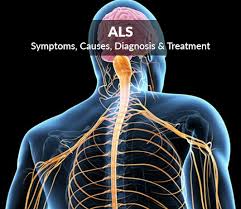Abstract
Amyotrophic lateral sclerosis (ALS) is a fatal disease characterized by aberrant alternative splicing (AS). Nuclear loss and cytoplasmic accumulation of the splicing factor TDP-43 in motor neurons (MN) are hallmarks of ALS at late stages of the disease. However, it is unknown if altered AS is present before TDP-43 pathology occurs. Here, we investigate altered AS and its origins in early stages of ALS using human induced pluripotent stem cell-derived motor neurons (MNs) from sporadic and familial ALS patients. We find high levels of the RNA-binding proteins NOVA1, NOVA2, and RBFOX2 in the insoluble protein fractions and observe that AS events in ALS-associated MNs are enriched for binding sites of these proteins. Our study points to an early disrupted function of NOVA1 that drives AS changes in a complex fashion, including events caused by a consistent loss of NOVA1 function. NOVA1 exhibits increased cytoplasmic protein levels in early stage MNs without TDP-43 pathology in ALS postmortem tissue. As nuclear TDP-43 protein level depletes, NOVA1 is reduced. Potential indications for a reduction of NOVA1 also came from mice over-expressing TDP-43 lacking its nuclear localization signal and iPSC-MN stressed with puromycin. This study highlights that additional RBP-RNA perturbations in ALS occur in parallel to TDP-43.
Introduction
Amyotrophic lateral sclerosis (ALS) is a rare, fatal neurodegenerative disease that progressively affects motor neurons (MNs) in the motor cortex, brainstem, and spinal cord [30]. The majority of ALS cases occur sporadically (sALS) and less than 10% are monogenic [30]. Nuclear loss, pathological cytoplasmic aggregation [4, 48], and hyperphosphorylation of the RNA-binding protein (RBP) TDP-43 [47] are frequently present in spinal and cortical MNs in ALS patients at late stages of the disease. Underscoring its central role, pathogenic variants in the TARDBP gene that encodes for TDP-43, have also been discovered in ALS patients [61].
A prevailing hypothesis is that TDP-43 nuclear loss-of-function and a toxic cytoplasmic gain-of-function of TDP-43 in insoluble aggregates contribute to the neuronal vulnerability in TDP-43 proteinopathies [11, 19, 23, 38, 69]. Early studies, modeling the loss-of-function, utilized transcriptome-wide cross-linking and immunoprecipitation (CLIP) and RNA-seq and identified that TDP-43 mediates RNA splicing primarily by interacting with UG-rich intronic sequences [52, 64]. Interestingly, aberrant alternative splicing (AS) is frequently observed in postmortem tissue of ALS patients [12, 54]. Later studies further highlighted a subset of unannotated human exons (cryptic) normally repressed by TDP-43 in the nucleus [37]. Recently, inclusion of a human-specific cryptic exon in the transcript of the microtubule regulator Stathmin2 (STMN2) has been identified upon TDP-43 depletion, resulting in the generation of a nonsense mediated decay mRNA isoform [31, 46]. These studies also show that this isoform of STMN2 is present in sALS patient samples [31, 46].
Transient, non-lethal stress in induced pluripotent stem cell-derived motor neurons (iPSC-MN) was previously shown to induce the formation of cytoplasmic TDP-43 aggregates [21], leading to signs of aberrant TDP-43 function such as inclusion of the TDP-43-associated STMN2 cryptic exon [41]. In our previous work in patient iPSC-MN with pathogenic variants in hnRNP A2/B1 causing severe neurodegeneration, we found that chemical stress was required to induce hnRNP A2/B1 to move into the cytoplasm [44]. However, even in the absence of stress, abnormal AS changes in patient iPSC-MN were observed suggesting that aberrant AS is an early sign of disease while cytoplasmic localization of RBPs may be a secondary, end-stage feature [44].
These studies collectively suggest that perturbation of RBP-splicing networks is a key component of ALS and may be an early event preceding cytoplasmic localization and aggregation of abnormal RBP-RNA complexes. Here, we investigated the origins of altered AS in early stages of sporadic and familial ALS and discovered new aberrant RBP-splicing networks. We utilized mass spectrometry to identify RBPs that exhibit increased insolubility in iPSC-MNs from ALS patients compared to controls. Focusing on splicing factors NOVA1, NOVA2, and RBFOX2, we applied enhanced CLIP methodology and discovered an enriched frequency of RNA binding of these proteins proximal to ALS-associated AS events. Of these, deeper evaluation of NOVA1 revealed elevated protein levels in the cytoplasm of ALS MNs without TDP-43 pathology in postmortem tissue. Exogenous expression and genetic knock out of NOVA1 revealed a complex disruption of NOVA1 function, including events caused by a consistent loss of NOVA1 function at early disease stages where TDP-43 pathology has yet to be developed….







